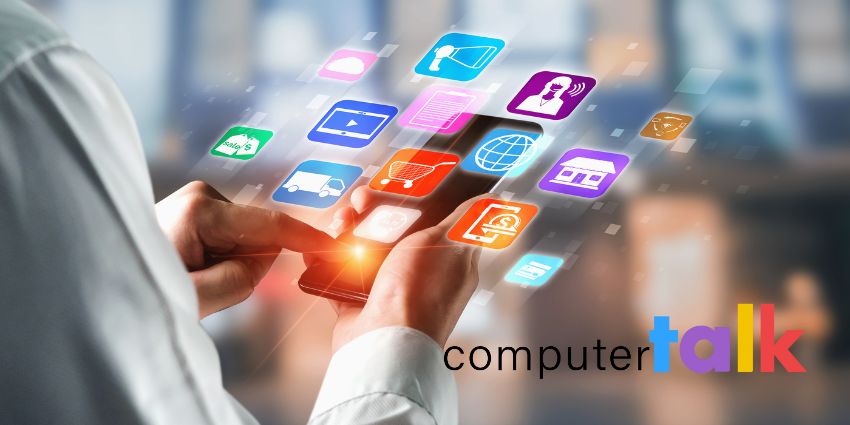The future of contact center interactions is omnichannel. As the world has evolved, consumers have begun to explore more ways of interacting with brands through the channels they find most convenient. While phone and email are still popular methods of communication, most customers also expect businesses to deliver their services across other channels, such as SMS, web chat, and social media.
Delivering a comprehensive omnichannel experience provides incredible benefits to businesses, with studies showing that companies with strong omnichannel engagement strategies retain around 89% of their customers.
In this article, we’ll explain why building an omnichannel contact center on Microsoft Teams could be the solution.
Why Create an Omnichannel Contact Center on Microsoft Teams?
In the ever-evolving workplace, companies rely heavily on digital tools to keep employees engaged. For many organizations, Microsoft Teams has become the go-to platform for team collaboration and synergy; empowering employees to connect with one another and work together from anywhere.
However, the benefits of Microsoft Teams can apply to more than just internal communications. Thanks to Microsoft’s partnerships, companies can also use their Teams platform as an all-in-one solution for internal collaboration and customer service.
With a Microsoft Teams integration, companies can quickly unify their video, voice, chat, and other communication tools, while driving better collaboration among employees. What’s more, Teams-certified contact centers have robust reporting features, making it easier for businesses to assign the right resources to the correct channels, and deliver exceptional customer experiences.
How to Build an Omnichannel Contact Center on Microsoft Teams
While there are various contact center integrations available for Microsoft Teams today, not all solutions offer the same level of omnichannel support and innovation. To ensure your solution empowers workers, enhances customer experience, and delivers results, you need a defined strategy.
Step 1: Assess Your Current Contact Center Technology
The first step to building an omnichannel contact center in Teams is examining your current technology and contact center employees. This will help you to determine what you need from a Teams contact center integration standpoint. For instance, do you have legacy PBX solutions you need to utilize alongside your digital contact center technology?
What kind of tools do your employees use to manage customer interactions? If you’re using ticketing software, CRM solutions, and similar technology, it’s important to ensure they can all integrate with the contact center software that you choose.
Step 2: Decide on Your Communication Channels
An omnichannel contact center should offer customers multiple ways to interact with your business, but the channels you choose should depend on your customer base. While voice and email are common options for most brands, you may want to consider other methods too.
For instance, social media is a popular way for younger customers to interact with brands, but integrating Microsoft Teams with social media channels can be complex.
You might also want to consider options like SMS messaging, web chat, and instant messaging, all of which need to be integrated natively into your Teams environment to ensure productivity.
Step 3: Consider Essential Contact Center Features
Most contact center solutions certified for Microsoft Teams will allow you to make and receive calls, create directories, and complete other CX tasks within Teams. However, more advanced solutions will give you more features to choose from.
For instance, you might need a contact center with a native natural language speech and chat bot already built-in, as well as the option for skills-based routing. You may also consider looking for tools that allow you to build your own chatbot for self-service, or automate processes like recording and transcribing conversations or sending surveys to customers.
Step 4: Prioritize In-depth Analytics
Gathering insights from your contact center is crucial to ensuring you can consistently optimize both customer and agent experiences. However, collecting insights from various channels can be complicated without the right toolkit. An omnichannel contact center with Microsoft Teams will give you access to extensive analytical tools.
The right solution should go beyond the basic metrics you can get in Teams, by allowing you to monitor interaction data and metrics in real time through a dedicated dashboard. It should offer historical overviews of critical KPIs and allow you to create custom reports on-demand, or according to a schedule. Some solutions even allow you to set up instant notifications and alerts to keep team members up to date in real time.
Step 5: Ensure Ease of Use
Finally, it’s critical to ensure the omnichannel solution you choose for Microsoft Teams is easy to use, configure, and customize in order to suit your specific business needs. Look for a platform that offers a comprehensive dashboard where employees can manage all their conversations with customers in one place, search for subject matter experts, and access key data.
Use tools that help employees to manage outbound campaigns more effectively, and even automate dialing to save time. The right solution should also make life easier for supervisors and business leaders, by helping them identify gaps and inefficiencies in contact center performance and make changes to the CX stack as needed.
Concerned about moving your mission critical contact center to Teams? “With the ice contact center for Teams, native icePhone, customers now have an instant alternative when Teams or Direct Routing goes down, for agents to continue handling voice and text communications.” says Dennis Menard, Application Design Specialist at global enterprise-class provider ComputerTalk.
Creating an Omnichannel Contact Center in Microsoft Teams
As the leading collaboration platform in the modern business world, Microsoft Teams represents an exceptional resource for businesses. Not only can it unify your employees, but it can help you to build a comprehensive strategy for supporting customers across multiple channels.
The key to success starts with the correct Microsoft Teams contact center integration, offering all the features you need to enhance customer experiences, and empower employees.







